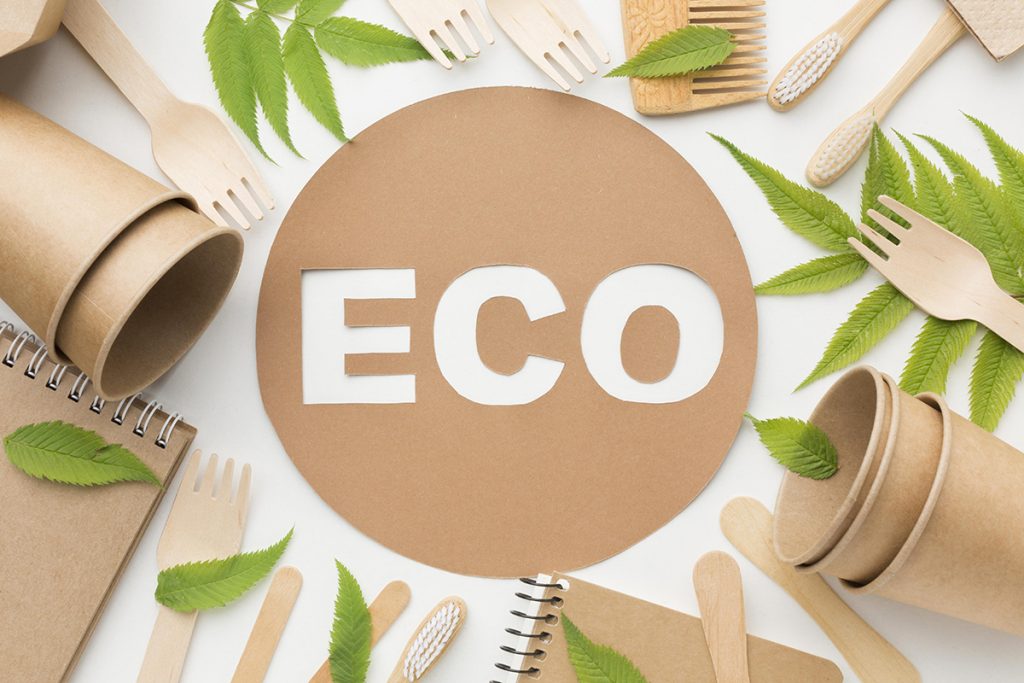8 Simple ways to live more eco-friendly

Each day, we are faced with decisions that have an impact on the environment, climate, and the well-being of other species. Whether it’s our dietary choices or the size of our families, there are numerous opportunities to minimize our ecological footprint and create space for wildlife and plants.
While our personal choices carry significance, we must remember that we can’t achieve this transformation independently. Therefore, let’s all adopt the following straightforward methods to embrace a more eco-friendly lifestyle.

01. Consider your purchases carefully
Each item we buy carries an environmental impact, encompassing everything from the resources used in its production to the pollution generated during manufacturing, as well as the disposal of its packaging in landfills or incineration. Even if a product can be recycled or composted at the end of its lifecycle, the harm done upstream cannot be undone.
So, prior to making a purchase, take a moment to reflect on whether you truly require it. If the need is genuine, contemplate acquiring secondhand items instead of new ones, and seek out eco-friendly alternatives crafted from materials with a lower ecological footprint and minimal packaging and shipping.
02. Reduce plastic usage and embrace reusability
Plastic is an enduring pollutant. Approximately 14 million tons of it find its way into the oceans each year, constituting 80% of marine debris. This plastic influx poses a grave threat to various marine life forms, including seabirds, sea turtles, seals, and other marine mammals, which often ingest or become entangled in plastic waste.
To decrease your plastic footprint, you can adopt some straightforward eco-friendly measures: opt for reusable bags when shopping, forsake single-use water bottles, bags, and straws, and make an effort to avoid products crafted from or packaged in plastic whenever possible (e.g., opt for unwrapped produce at the grocery store). Embrace reusable alternatives over single-use items whenever feasible, as each instance of plastic avoidance is a victory for our planet.

03. Remove extinction from your dining choices
The meat industry stands as one of the most environmentally harmful sectors globally, contributing significantly to excessive water consumption, pollution, the release of greenhouse gases, and the destruction of natural habitats. Opting for a diet richer in plant-based foods while reducing meat consumption is a powerful eco-friendly way to shrink your environmental impact.
Furthermore, food constitutes the largest single category of materials deposited into municipal landfills. To combat food waste, adopt intelligent, premeditated shopping practices and ensure that you consume what you purchase.
04. Choose organic products
Whether it’s coffee, fruit, or clothing, selecting organic goods is a step toward diminishing your impact on wildlife and the Earth. In the United States alone, over 2 billion pounds of pesticides are sold annually, with these chemicals infiltrating fish and wildlife habitats, endangering the survival of numerous species.
Pesticides also taint the air, water, and soil, contaminating the food we consume. If you engage in gardening, steer clear of pesticides by cultivating your plants organically. Opting for organic products helps keep harmful pesticides away from our land and water, safeguards farm laborers, vulnerable communities, wildlife, and your own family.

05. Abandon fast fashion and animal-derived textiles
Fast fashion represents a colossal and swiftly expanding industry. The production of new garments annually has nearly doubled in the last two decades, and our global consumption of fashion has surged by 400%.
The fast fashion sector stands as a substantial contributor to the climate crisis, accounting for as much as 10% of global carbon emissions. Meanwhile, animal-based textiles such as wool contribute to water pollution, extensive habitat loss through deforestation, and various adverse impacts on wildlife.
Pace your approach to fashion by nurturing your clothing, repairing items whenever feasible, and, when you require new attire, explore secondhand options or participate in clothing exchanges. In instances where you must purchase new garments, disregard superficial eco-friendly claims and instead choose clothing crafted from genuinely sustainable materials like organic cotton or Tencel, offered by brands dedicated to longevity.
06. Embrace water efficiency
Water conservation is of utmost importance, particularly as our growing population places greater strain on our nation’s water resources while we grapple with unprecedented droughts. You can contribute to water conservation by taking shorter showers, rectifying leaky toilets, and selecting low-flow and water-efficient appliances.
Additionally, it’s worth noting that one of the most water-intensive sectors is animal agriculture. Therefore, transitioning your dietary choices away from meat and dairy products not only benefits your health but also conserves water resources.

07. Drive less, opt for eco-friendly transportation
Emissions from fossil-fueled vehicles contribute to the release of greenhouse gases, smog, soot, and other harmful air pollutants. However, altering your driving habits can significantly decrease your carbon footprint. Whenever feasible, choose to walk, bike, carpool, utilize public transportation, or participate in eco-friendly ride or bike-sharing programs. Streamline your errands to minimize the number of trips you make.
Additionally, it’s essential to maintain your vehicle in good condition through regular tune-ups and tire maintenance. Tune-ups can enhance your fuel efficiency, and it’s worth noting that a tire that is 20% underinflated can increase a vehicle’s fuel consumption by 10%.
08. Greenify your home
Just as ensuring your vehicle is well-maintained improves fuel efficiency, maintaining your home’s condition enhances energy efficiency. Ensure your home is adequately insulated and equipped with energy-efficient windows. Employ a programmable thermostat to optimize heating and cooling efficiency, and, of course, use energy-efficient light bulbs to enhance lighting efficiency.

8 Simple ways to live more eco-friendly conclusion
Embracing sustainability and eco-friendliness entails adopting a lifestyle that avoids harm to the environment. This approach to living is growing in significance as we recognize the imperative need to shield our planet from harm caused by human actions.
There are numerous ways for individuals to implement eco-friendly alterations, thus diminishing the adverse impacts typically associated with our daily routines. You can initiate this process by following the eight straightforward eco-friendly methods outlined in this article.



















